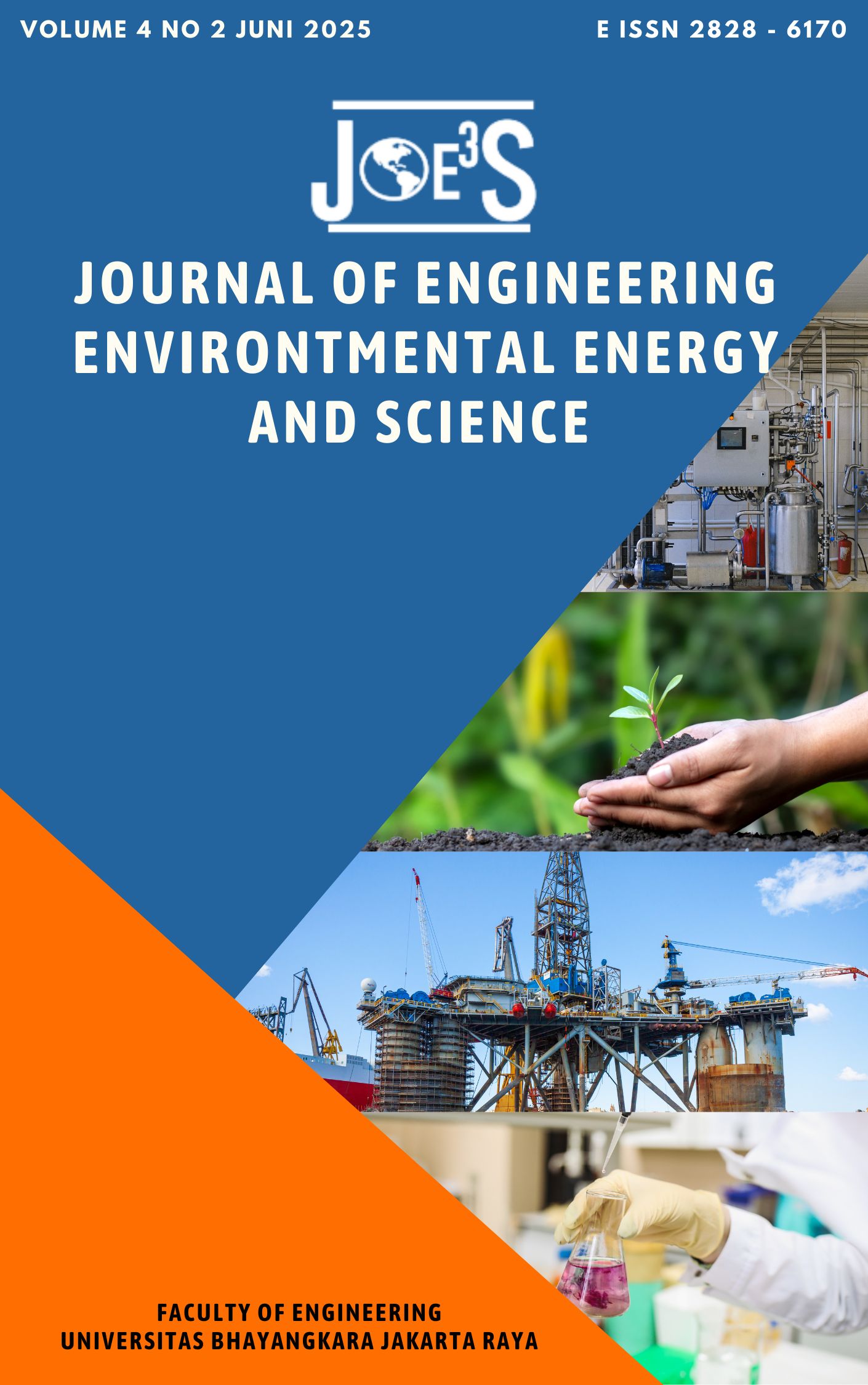Potensi Konversi Limbah Organik dengan Metode Pirolisis Menjadi Biochar, Syngas dan Bio-Oil: Tinjauan Literatur Sistematis
DOI:
https://doi.org/10.31599/rthfkf79Keywords:
Biochar, Syngas, Bio-Oil, Pyrolysis, household and environmental wasteAbstract
Indonesia has a major challenge in organic waste management, with household waste being the main component. Pyrolysis methods offer a promising solution to address this problem by converting organic waste into valuable products such as biochar, syngas, and bio-oil. This article analyzes the potential of pyrolysis methods in managing organic waste in Indonesia, including the physicochemical characteristics and applications of pyrolysis products. A systematic literature study was used to review various sources related to organic waste treatment. Pyrolysis is the thermal decomposition of organic materials under oxygen-poor conditions at high temperatures (300-700°C), producing biochar, bio-oil, and syngas. This method provides a more environmentally friendly alternative to incineration and landfilling, with a wide range of potential applications for the resulting products.
Downloads
References
eef9af815833da3b7031_biochar process explain how it works (1). (n.d.).
Alex Tabibi. (n.d.). Pyrolysis: Transforming Waste Materials into Valuable Resources. January 30, 2024. https://green.org/2024/01/30/pyrolysis-transforming-waste-materials-into-valuable-resources/
ApplicationOfBiocharInAgriculturalSystems_031124L-G.pdf. (n.d.).
Awad, M. I., Makkawi, Y., & Hassan, N. M. (2024). Yield and Energy Modeling for Biochar and Bio-Oil Using Pyrolysis Temperature and Biomass Constituents. ACS Omega, 9(16), 18654–18667. https://doi.org/10.1021/acsomega.4c01646
Cahyono, M. S. (2023). Pyrolysis Process of Organic Waste into Bio-Oil as an Alternative Fuel. 5(1), 1–7.
Devi, M., & Rawat, S. (2021). A comprehensive review of the pyrolysis process: From carbon nanomaterial synthesis to waste treatment. Oxford Open Materials Science, 1(1), 1–30. https://doi.org/10.1093/oxfmat/itab014
Ex Situ Soil Remediation Technology. (n.d.). 2020. https://www.frtr.gov/matrix2/section4/4-25.html
Frolov, S. M. (2021). Organic Waste Gasification: A Selective Review. Fuels, 2(4), 556–650. https://doi.org/10.3390/fuels2040033
International Energy Agency. (n.d.). Applications for Utilisation of Liquids Produced by Fast Pyrolysis of Biomass. Biomass and Bioenergy, 1–7.
Islam, M. S., Miah, M. Y., Ismail, M., Jamal, M. S., Banik, S. K., & Saha, M. (1970). Production of Bio-Oil from Municipal Solid Waste by Pyrolysis. Bangladesh Journal of Scientific and Industrial Research, 45(2), 91–94. https://doi.org/10.3329/bjsir.v45i2.5703
Kabir, E., Kim, K. H., & Kwon, E. E. (2023). Biochar as a tool for the improvement of soil and environment. Frontiers in Environmental Science, 11(December), 1–17. https://doi.org/10.3389/fenvs.2023.1324533
Listiana, I., Kuswanto, E., & Hoya, A. L. (2024). Utilization of Maggot Larvae ( Hermetia illucens ) for Processing Food Waste at the UIN Raden Intan Lampung Canteen. 13(2), 511–516. https://doi.org/10.14421/biomedich.2024.132.511-516
Loc, N. X., & Phuong, D. T. M. (2025). Optimizing biochar production: a review of recent progress in lignocellulosic biomass pyrolysis. Frontiers of Agricultural Science and Engineering, 12(1), 148–172. https://doi.org/10.15302/J-FASE-2024597
Mark Hertsgaard. (n.d.). As Uses of Biochar Expand, Climate Benefits Still Uncertain. https://e360.yale.edu/features/as_uses_of_biochar_expand_climate_benefits_still_uncertain
Singh, B., Shen, Q., Arbestain, M. C., Dolk, M. M., & Camps-Arbestain, M. (2017). Chapter 3. Biochar pH, electrical conductivity and liming potential Biochar ageing effects on N and P dynamics:Mechanisms and controlling factors View project Soils in the globl agenda-ITPS-GSP?FAO View project 3 Biochar pH, electrical conductivity and li. March, 23–38. https://www.researchgate.net/publication/319206365
Zhao, J. J., Shen, X. J., Domene, X., Alcañiz, J. M., Liao, X., & Palet, C. (2019). Comparison of biochars derived from different types of feedstock and their potential for heavy metal removal in multiple-metal solutions. Scientific Reports, 9(1), 1–12. https://doi.org/10.1038/s41598-019-46234-4
Downloads
Published
Issue
Section
License
Copyright (c) 2025 Journal of Engineering Environtmental Energy and Science

This work is licensed under a Creative Commons Attribution 4.0 International License.








